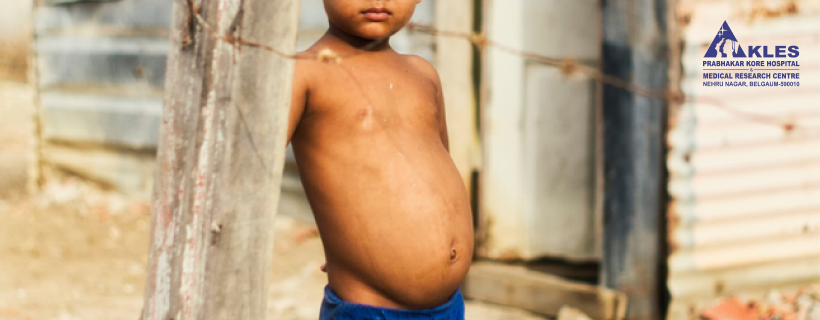

Medically Reviewed by Dr. Vineeta Gautam, Pediatrics
Written by KIE Editorial Contributors
3.5 min read | Last Updated: 11 August 2025 | Published On: 11 August 2023
Kwashiorkor is a severe nutrition disorder caused by protein deficiency, and is a life-threatening condition primarily affecting children in developing regions. Left untreated, kwashiorkor disease can result in permanent damage to growth, cognition, and immunity. Understanding the signs and symptoms of kwashiorkor, the difference between kwashiorkor and marasmus, and how to prevent it is crucial for at-risk families and caregivers.
Kwashiorkor is a severe form of protein-energy malnutrition that primarily affects children between 1 and 4 years old. It results from a diet that provides adequate calories but lacks protein. The term kwashiorkor originates from Ghana, meaning "the sickness the older child gets when the next baby is born.
It is a nutritional disorder that differs from marasmus, which involves a deficiency of both calories and protein. A key symptom of kwashiorkor is edema (swelling), which sets it apart.
An extreme deficiency of dietary protein causes kwashiorkor. It occurs in areas where people primarily consume starchy foods, such as rice, maize, or cassava, with a minimal intake of protein-rich foods like eggs, meat, or legumes.
Kwashiorkor symptoms develop gradually in weeks or months. Common signs and symptoms of kwashiorkor include:
Early kwashiorkor diagnosis is crucial for survival. It is based on:
Kwashiorkor is not a contagious disease. It doesn't spread between people. Instead, it develops due to poor nutrition and often affects children in the same household or community.
The difference between kwashiorkor and marasmus is that marasmus involves extreme wasting due to both protein and calorie deficiency, whereas kwashiorkor is primarily due to protein deficiency and causes edema.
Kwashiorkor treatment Keys on medical stabilisation and nutritional rehabilitation steps include:
Recovery is possible if treated early. Without treatment the condition can cause irreversible damage or death.
There is no vaccine to prevent kwashiorkor. Prevention relies on public health education and improving access to nutritious foods.
| Feature | Kwashiorkor | Marasmus |
| Protein intake | Severely deficient | Deficient |
| Calorie intake | Often adequate | Severely deficient |
| Edema | Present | Absent |
| Weight loss | Masked by fluid | Severe loss |
| Hair/skin changes | Common | Less common |
| Appetite | Poor | Good |
Get in Touch with a Doctor
While kwashiorkor is most common in children, it can also affect adults in cases of severe malnutrition or chronic illness.
Kwashiorkor is sometimes referred to as Red Boy because children with this condition often develop a characteristic reddish or rusty discolouration of the hair.
Kwashiorkor can be prevented through proper nutrition, which includes an Adequate intake of high-quality proteins, such as eggs, milk, fish, and legumes. Balanced diet with carbohydrates, fats, and vitamins.
Hyperpigmentation in kwashiorkor occurs due to changes in melanin metabolism caused by severe protein deficiency. The skin becomes more fragile and prone to peeling, and areas exposed to friction or sunlight may appear darker due to increased melanin production, resulting in increased pigmentation.
Treatment includes gradually reintroducing protein and calories into the diet, along with medical management of complications.